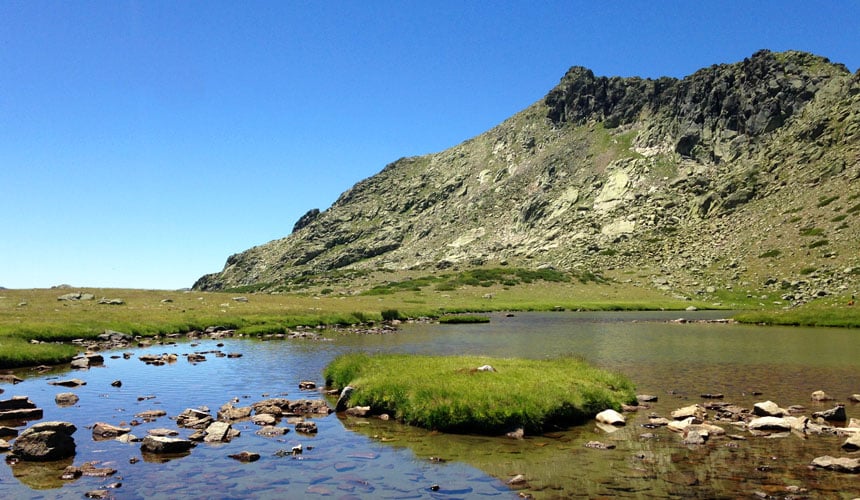THE 15 NATIONAL PARKS IN SPAIN
Do you know that the Picos de Europa Park was the first National Park created in Spain in 1918 and was the second worldwide after Yellowstone in the USA?
Do you know that the most visited National Park in Spain is the Teide with more than 3 million visitors or that the largest is the Sierra Nevada and the smallest is the Tablas de Daimiel?
Do you know the Sierra de Guadarrama in Madrid is the most recent Park declared in 2013?
The orography and geology of the Iberian peninsula and the islands offer a varied sample of unique landscapes, full of contrasts and different ecosystems hosting a rich biodiversity of wildlife and flora. These pristine sceneries and other natural reserves of great value needs maximum protection of our goverment and institutions for all of us and for future generations. Furthermore we must be aware of our responsability to protect and conserve the environment to the best of our ability when we practice mountain sports and outdoor activities within and around the parks.
At present there are 15 National Parks in Spain: ten of them in the Iberian peninsula, four in the Canary Islands and one in the Balearics Islands.
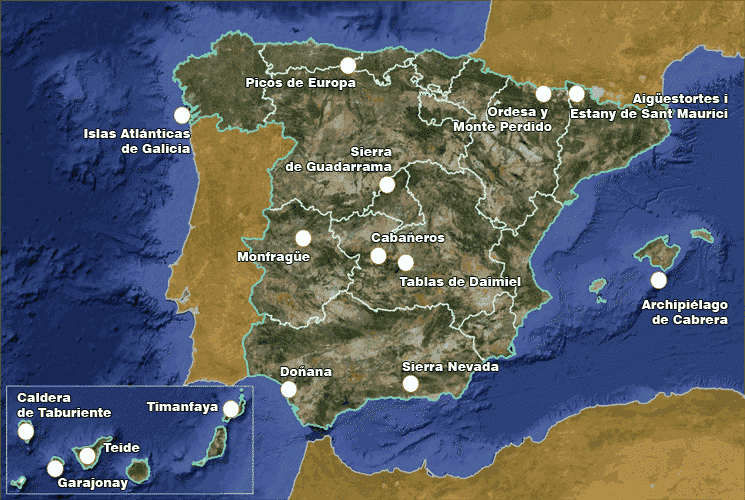
1. NATIONAL PARK OF “PICOS DE EUROPA”
• Location (Province and Autonomous Community/Region): Asturias, Castille-León and Cantabria.
• Declaration Year as National park: Declared in 22th July of 1918, then reclassified in 1995 and extended in 2014.
• Ecosystem/environment: High Atlantic mountain: glacier and karstic geomorphology, high summits, canyons, forests and alpine prairies.
• Highlights of the Park: It represents the ecosystems linked to the Atlantic forest. The Picos de Europa have the highest limestone formation in Atlantic Europe, with important karstic processes, very strong glacier erosion and numerous lakes. In the heights inhabits the chamois, in the dense forests roe deer, wolves and occasional presence of brown bears. In the Park there are more than 100 species of birds and big raptors. But here there is much more than a landscape, there are centuries of history written in the villages, in the valleys, in the churches, in the huts of the ports and in their roads.
• Recommended Adventure and Outdoor Sports: Hiking, climbing, mountaineering, canyoning, caving, via ferrata and kayaking.
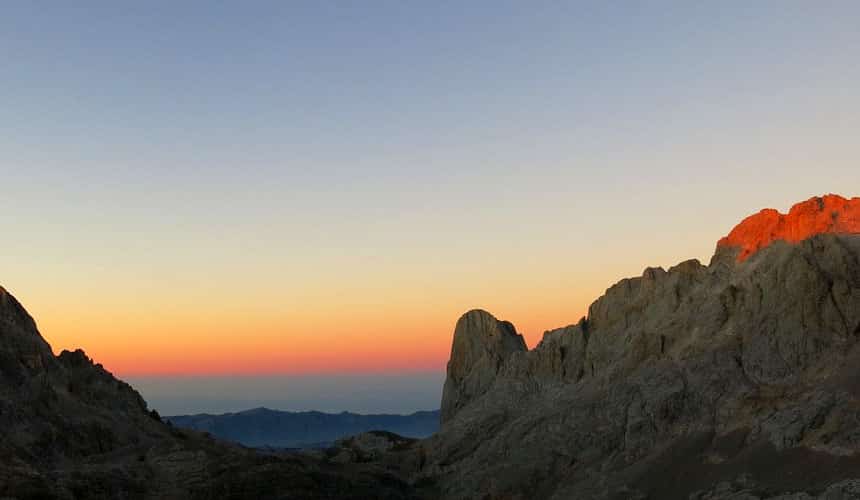
2. NATIONAL PARK OF “ORDESA & MONTE PERDIDO”
- Name of the Park: National park of “Ordesa y Monte Perdido”.
- Location (Province and Autonomous Community/Region): Huesca, Aragon.
- Declaration Year as National park: Declarated in 1918, then Reclassification and Extensions in 1982.
- Ecosystem/environment: High mountain: glacier and glacial geomorphology, carstic and fluvial forests of conifers and hardwoods.
- Highlights of the Park: The Monte Perdido (3,355 m) is dominates in the mountain, with the summits/top of the Three Sorores, from which the valleys of Ordesa, Pineta, Añisclo and Escuaín derive. A landscape of great contrasts: the extreme aridity of the highlands, where rainwater and thawing filtered through cracks and drains, contrasts with the green valleys covered by forests and meadows, where water forms waterfalls and crosses canyons and ravines. In this territory are enclosed other areas of/about no less ecological value, such as the valleys of Añisclo, Escuaín and Pineta, as well as the heights of Monte Perdido, vast deserts where there are blizzards, snow, bare rock and remains glaciers. This need is now endorsed by other protection figures who, in addition to guaranteeing conservation status of this nature, require responsible and sustainable management: European Diploma, Ordesa-Viñamala Biosphere Reserve, Special Protection Area for Birds and, Above all others the trans-Pyrenean figure of World Heritage recognized by Unesco.
- Recommended Adventure and Outdoor Sports: Hiking, climbing, mountaineering, canyoning, via ferrata, paragliding, skimo, snowshoeing, mtb and rafting.

3. NATIONAL PARK OF “CAÑADAS DEL TEIDE”
• Location (Province and Autonomous Community/Region): Santa Cruz de Tenerife, Tenerife island, Canary Islands.
• Declaration Year as National park: Declared in 1954, then Reclassified in 1981.
• Ecosystem/environment: Volcanic-macaronesic: volcanic geomorphology (canyons, malpaises …), endemisms, highland canary scrub.
• Highlights of the Park: It is the largest and oldest of the Canarian Parks. Its extraordinary landscape is a geological monument of the most spectacular in the world, in which volcanic cones and lava flows form an extraordinary array of colors and shapes. You can’t forget its great biological wealth, the extraordinary high percentage of endemic plant species and the importance in terms of number and exclusivity of its invertebrate fauna. There are some species of reptiles (such as the Tenerife lizard) and birds (Egyptian vulture, Sparrow hawks, Lesser kestrels, Red kite), Mammals are scarce, the most common of which are the Mouflon, rabbits and five species of bat. It is recognised as a stargazing destination by the Starlight Foundation.
• Recommended Adventure and Outdoor Sports: Hiking, climbing, mountaineering, canyoning, caving, via ferrata and kayaking.
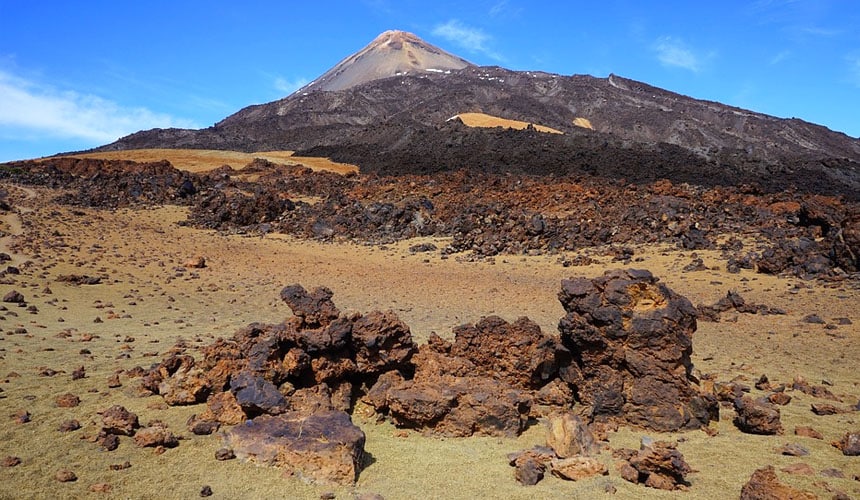
4. NATIONAL PARK OF “CALDERA DE TABURIENTE”
• Location (Province and Autonomous Community/Region): Santa Cruz de Tenerife, la Palma Island, Canary Islands.
• Declaration Year as National park: Declared in 1954, then Reclassified in 1981.
• Ecosystem/environment: Volcanic-macaronesic: volcanic and erosive caldera, canary pine and vegetation.
• Highlights of the Park: The most attractive feature of this National Park is its rugged landscape, the result of the dramatic difference in height. It is criss-crossed by numerous streams and waterfalls, and also has a significant presence of endemic plant species, including large expanses of Canary Island pines all over the park. Caldera de Taburiente is an immense crater surrounded by the highest peaks on the island: El Roque de los Muchachos (2,426 m), Pico de la Cruz (2,351 m), Piedra Llana (2,321 m), Pico de la Nieve (2,236 m), and Punta de los Roques (2,085 m), among others. From here, the terrain drops steeply into the crater in almost vertical cliff faces over 800 m high until a height of 430 m above sea level, with a difference in altitude of around 2,000 metres.
• Recommended Adventure and Outdoor Sports: Hiking, trail running, canyoning, surfing and kayaking.
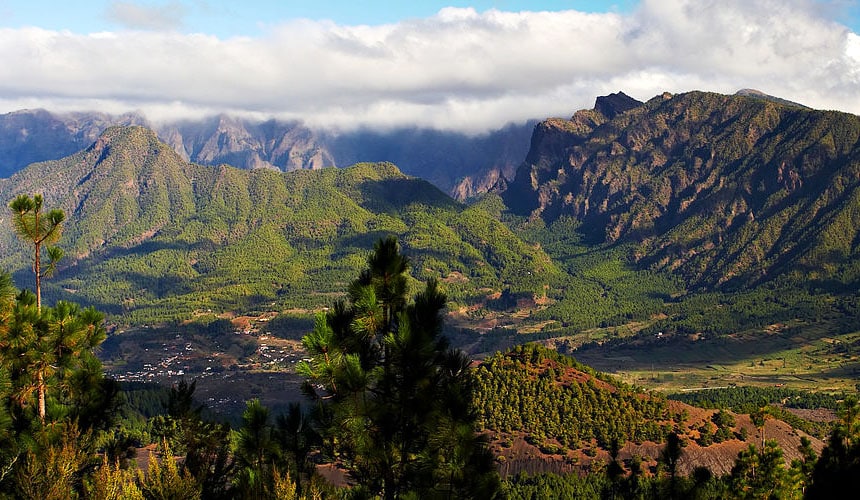
5. NATIONAL PARK OF “AIGUESTORTES AND SAN MAURICIO LAKE”
• Location (Province and Autonomous Community/Region): Lleida, Catalonia.
• Declaration Year as National park: Declared in 1955, then Extended in 1996.
• Ecosystem/environment: High Atlantic mountain: glaciers, conifers and hardwood forests, alpine prairie.
• Highlights of the Park: Its main sign of identity corresponds to the more than 200 lakes, the impressive crags of “Els Encantats” and to its characteristic meanders of high mountain (the aigüestortes). It is a true paradise for nature lovers: lakes, torrents, waterfalls, peatlands, canyons, wild peaks and leafy forests of black pine, spruce, wild pine, birch and beech, are home to a multitude of interesting plants and fascinating animals of alpine or boreal origin.
• Recommended Adventure and Outdoor Sports: Hiking, mountaineering, climbing, snowshoeing, ski, mtb, canyoning and rafting.
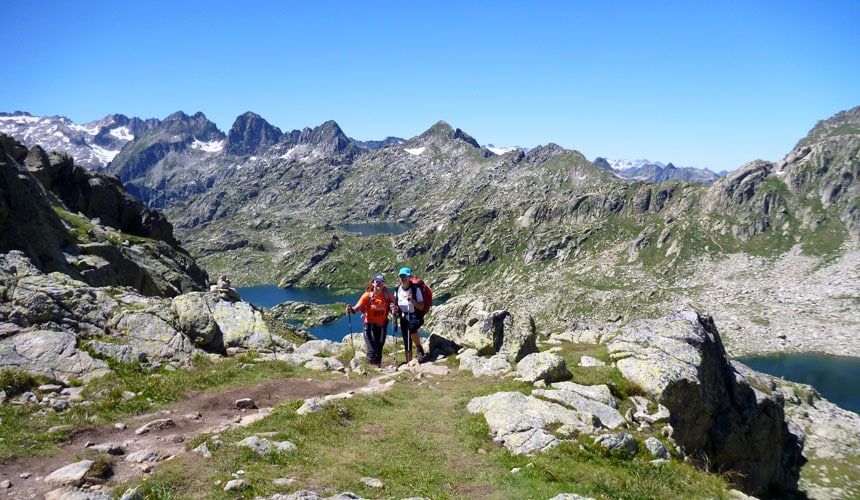
6. NATIONAL PARK OF “DOÑANA” (Donana)
• Location (Province and Autonomous Community/Region): Huelva, Sevilla y Càdiz, in Andalucia.
• Declaration Year as National park: Declared in 1969, then Extended in 1978.
• Ecosystem/environment: Wetland: coastal marshes, mobile dunes, pine forests and cork oaks.
• Highlights of the Park: The Doñana National Park is a mosaic of ecosystems that shelter a unique biodiversity in Europe. Of particular importance is the salt marsh, of extraordinary importance as a place of refuge, breeding and wintering for thousands of European and African birds. In the Park live unique species, and in serious danger of extinction, like the Iberian imperial eagle and the Iberian lynx. Doñana means the confluence of a set of ecosystems (beach, dunes, marsh, meadows …) that give this Park a unique personality.
• Recommended Adventure and Outdoor Sports: Hiking, mtb and wildlife/birdwatching.
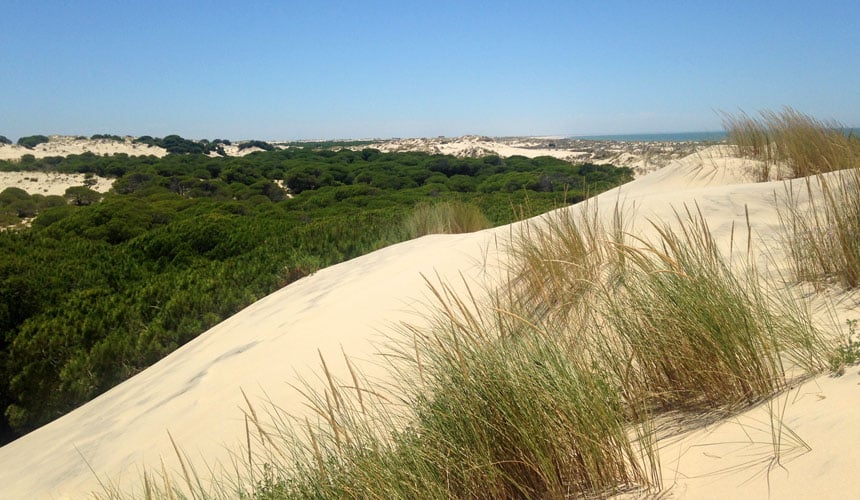
7. NATIONAL PARK OF “TABLAS DE DAIMIEL”
• Location (Province and Autonomous Community/Region): Ciudad Real, Castille-La Mancha.
• Declaration Year as National park: Declared in 1973, then Extended in 1980.
• Ecosystem/environment: Wetland: inland wetland, salt marshes and mediterranean meadows: pine and cork oak.
• Highlights of the Park: The park is a unique and special ecosystem, with wetlands formed by the rivers overflowing in their middle sections, causing flooding. The highest ecological value is the presence of birds that come to spend the winter and nest here, creating an area full of water birds. Las Tablas de Daimiel were formed because of the overflowing in the confluence of the Guadiana and Cigüela rivers, favoured by the sloping terrain. The wetlands are strategically situated on the migration routes of many bird species, which stop over to rest and even to spend the winter. Water birds are the protagonists of the park. These species include the great crested grebe, little grebe and black-necked grebe, heron, cattle egret, night heron, and all kinds of Iberian Anatidae. There are many flower species in the waters, too. Some of them are underwater (such as soft hornwort and rough stonewort), floating (duckweeds) and emerging (blue sedge, giant reeds and rushes).
• Recommended Adventure and Outdoor Sports: Hiking, mtb and wildlife/birdwatching.
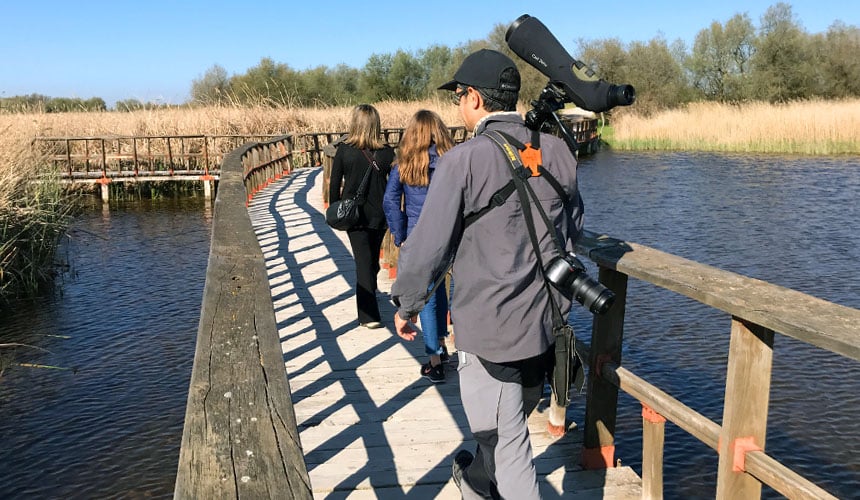
8. NATIONAL PARK OF “TIMANFAYA”
• Location (Province and Autonomous Community/Region):Lanzarote, Las Palmas, Canary Islands.
• Declaration Year as National park: Declarated in 1973, then Extensions in 1981.
• Ecosystem/environment: Volcanic-Macaronesian: pahoehoe, cinder cones and activities, geothermal and endemism.
• Highlights of the Park: Because of the spectacular fields of solidified lava that make up the island of Lanzarote, Timanfaya is the land of volcanoes. Different volcanic eruptions and magmatic activity throughout history turned this land into what we see today. From the natural viewpoint of Montaña Rajada you can observe a vast sea of lava that spreads out to the coast. It is simply impressive: undulations, spectacular shapes an colors formed by lava… Furthermore wellknown for its biological wealth and the great number of vegetal and animal endemisms.
• Recommended Adventure and Outdoor Sports: Hiking, surfing and kayaking.
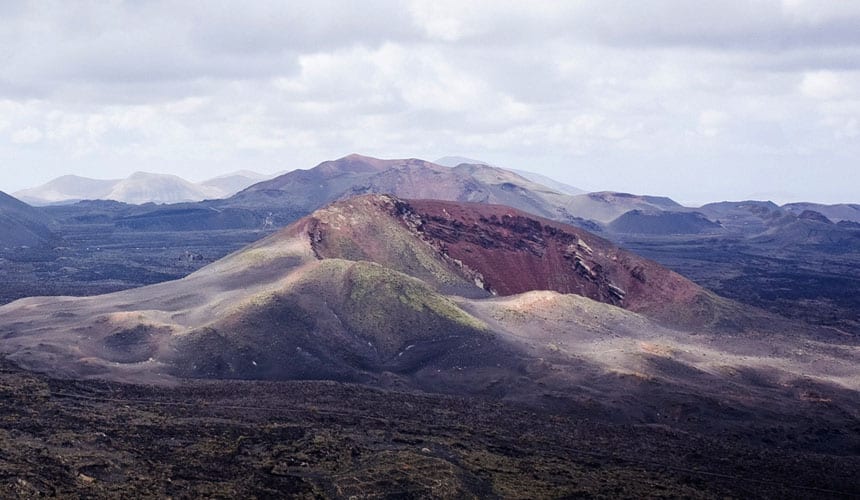
9. NATIONAL PARK OF “GARAJONAY”
• Location (Province and Autonomous Community/Region): Santa Cruz de Tenerife, La Gomera, Canary Islands.
• Declaration Year as National park: Declared in 1981.
• Ecosystem/environment: Volcanic-Macaronesian: ravines, phonolitic pythons, Roques, laurisilva canarian forests.
• Highlights of the Park: This national Park, declared a World Heritage Site by the UNESCO., contrasts with the rest of the Canary Islands. Here, instead of volcanic landscapes there are laurisilva forests, almost perpetually shrouded in mist. A stroll around Garajonay is like travelling back in time, as it has practically virgin vegetation. This is a place where the clouds hang low over the ground, providing an atmosphere of constant humidity and the famous horizontal rain which encourages growth of this lush and leafy forest. The forest landscapes are the main protagonists of the Park, as there are numerous different plant formations to be seen; everything from the laurisilva mentioned above, through white tree heath, mocan and the strawberry tree. The park is home to numerous bird species and two reptiles, the Gomeran lizard (Gallotia galloti gomerae) and the Gomeran skink (Chalcides viridanus coeruleopunctatus), as well as one species of amphibian, the little green frog (Hyla meridionalis). Includes stunning geological monuments, such as Los Roques.
• Recommended Adventure and Outdoor Sports: Hiking, canyoning, surfing and kayaking.
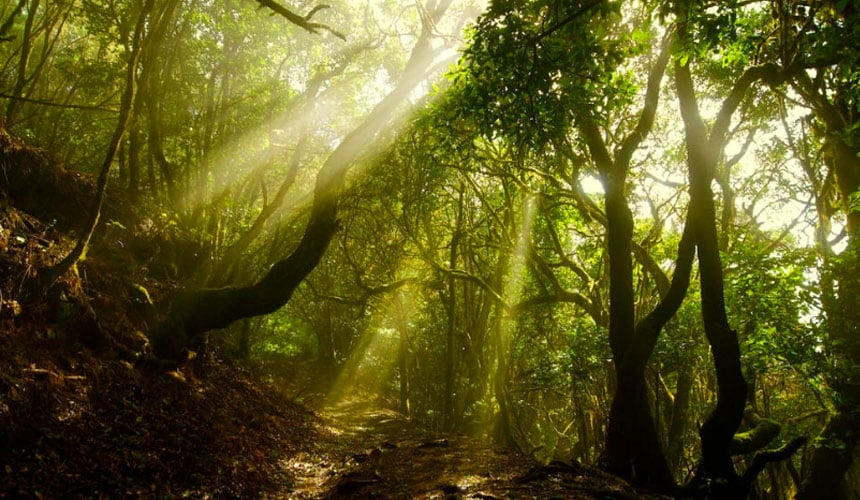
10. NATIONAL PARK OF “ARCHIPELAGO OF CABRERA”
• Location (Province and Autonomous Community/Region): Balearic Islands.
• Declaration Year as National park: Declared in 1991.
• Ecosystem/environment: Sea-coastal: rocky archipelago, sea bed, mediterranean scrub.
• Highlights of the Park: In this Park, woody shrubs predominate with leathery and small leaves, formers of the garriga, scrub perfectly adapted to the rigors of the Mediterranean climate, there are several endemisms: Astragalus of the Balearic Islands (Astragalus balearicus), blonde (Rubia angustifolia ssp. cespitosa) , Tragetas (Dracunculus muscivorum ), Balearic hypericum (Hypericum balearicum), etc. It is an important stopover point in the migratory route of more than 150 species of birds, in both the spring and autumn stages. This archipelago hosts the gull of Audouin (Larus audouini) and the falcon of Eleonora (Falco eleonorae). Seabed also represent a very important part of the Park, with over 200 species of fish and numerous endemic invertebrates.
• Recommended Adventure and Outdoor Sports: Hiking, scubadiving and kayaking.
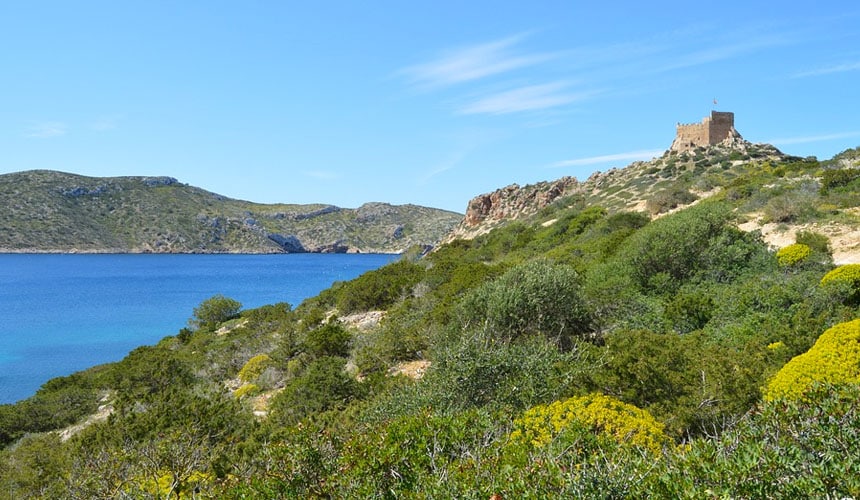
11. NATIONAL PARK OF “CABAÑEROS” (Cabaneros)
• Location (Province and Autonomous Community/Region): Ciudad Real and Toledo, Castille- La Mancha.
• Declaration Year as National park: Declared in 1995.
• Ecosystem/environment: Medium-high Mediterranean mountain: mountain ranges, piedmont and surface of spiders, Mediterranean mount and transition; Scrub, herbaceous formations.
• Highlights of the Park: Cabañeros National Park is outstanding because of its abundant fauna, including many endemic species. The meadows, mountain ranges and massifs covered with Mediterranean forests and thicket make a beautiful landscape. It is also the habitat of many animal species, especially birds (black vultures, Spanish imperial eagles, golden eagles). Large mammals also live in Cabañeros (45 species). It is easy to spot deer, wild boar and roe deer.
• Recommended Adventure and Outdoor Sports: Hiking, mtb and wildlife/birdwatching.
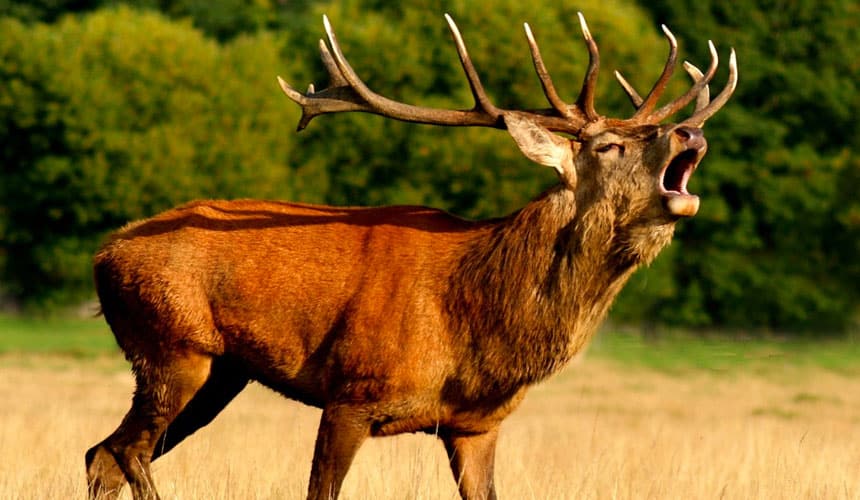
12. NATIONAL PARK OF “SIERRA NEVADA”
• Location (Province and Autonomous Community/Region): Granada, Almerìa and Màlaga, Andalucia.
• Declaration Year as National park: Declared in 1999.
• Ecosystem/environment: Medium-high Mediterranean mountain: glacier footprints, periglaciarismo, alpine pastures (borreguiles), woods of quercineas.
• Highlights of the Park: This park combines scenic beauty and ecological importance, as well as being home to the highest peaks on the peninsula. It was declared a Biosphere Reserve by the UNESCO in 1986. It is located to the southeast of Granada and extends to the eastern edge of Almería. It has both gentle slopes and steep cliffs, and is home to the highest peaks on the Iberian peninsula, the Mulhacén and the Veleta. It is a site of exceptional scenic value, shaped by its glacial origins and containing forests and diverse areas of natural vegetation. The park also has rich hydrological resources, including several natural mineral springs. Fifteen of its peaks are over 3,000 metres high.
• Recommended Adventure and Outdoor Sports: Hiking, mountaineering, climbing, via ferrata, snowshoeing, ski, mtb, canyoning and rafting.

13. NATIONAL PARK OF “ISLAS ATLÁNTICAS DE GALICIA”
• Location (Province and Autonomous Community/Region): Pontevedra and La Coruña, Galicia.
• Declaration Year as National park: Declared in 2002.
• Ecosystem/environment: Sea-land: seabed, endemic birds.
• Highlights of the Park: The Atlantic Islands National Park includes the Cíes Islands and the islands of Ons, Cortegada and Sálvora, all of them in the Rías Baixas estuaries. The park covers four clusters of rocky islands, with cliffs on the western side, facing the Atlantic ocean, and beautiful beaches and dunes on the eastern side, facing the estuaries. The most important and spectacular colonies of sea birds on the Spanish coast live on these islands, and many other underwater animal species can also be seen.It is recognised as a stargazing destination by the Starlight Foundation.
• Recommended Adventure and Outdoor Sports: Hiking, scubadiving, kayaking and wildlife/birdwatching.
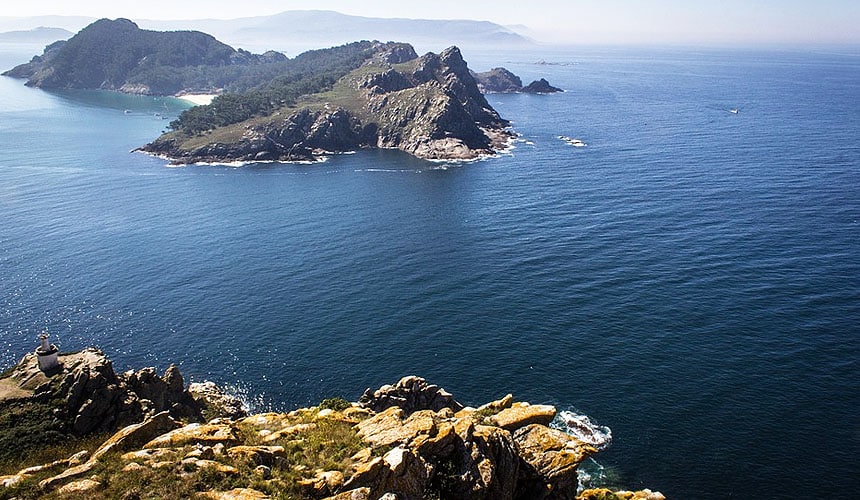
14. NATIONAL PARK OF “MONFRAGÜE” (Monfrague)
• Location (Province and Autonomous Community/Region): Cáceres, in Extremadura.
• Declaration Year as National park: Declared in 2007.
• Ecosystem/environment: Medium-high Mediterranean mountain: Mediterranean forest and scrub, meadows, rocks and water river banks.
• Highlights of the Park: The largest and best preserved Mediterranean forest worldwide is in Monfragüe (Extremadura), surrounded by hills populated with oak forests and Mediterranean thicket and dotted with rocks and streams. Rivers and reservoirs irrigate the riverside areas of Monfragüe National Park. All this results in a rich and varied plant and animal life. Since its declaration as a protected area until today, Monfragüe has been consolidated as a true sanctuary to observe birds. Every year, thousands of tourists come to the area to enjoy the flight of black storks, alimoches, vultures or the rare imperial eagle.
• Recommended Adventure and Outdoor Sports: Hiking, mtb, kayaking and wildlife/birdwatching.
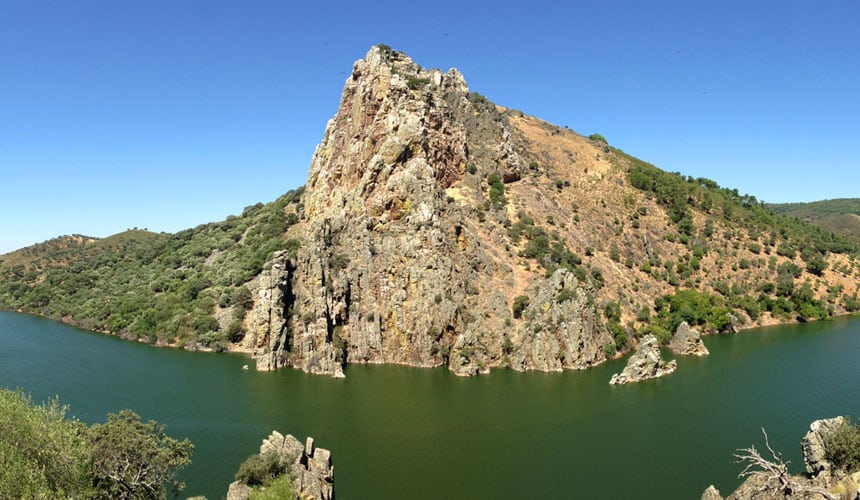
15. NATIONAL PARK OF “SIERRA DE GUADARRAMA”
• Location (Province and Autonomous Community/Region): Madrid, Segovia and Ávila, Community of Madrid and Castille-Leòn.
• Declaration Year as National park: Declared in 2013.
• Ecosystem/environment: Medium-high Mediterranean mountain: glacier process, forests of conifers and hardwood, scots pine and oak forests.
• Highlights of the Park: The National Park extends over the Sierra de Guadarrama mountain range, whose highest peak is the Peñalara summit with 2.428 m. The conditions of the Sierra, cooler and more humid than the plateaus, and their less transformation by human activity, have made these mountains a privileged refuge of biodiversity. Its physical features include glacial cirques and lakes, and granite rock fields, and its plant landscapes are formed by high-mountain ecosystems and extensive forests of Scots pine. Fox, deer, wild boar, mountain goat, vulture, some packs of wolves and other species live in this wide mountainous landscape.
• Recommended Adventure and Outdoor Sports: Hiking, mountaineering, climbing, snowshoeing, ski, mtb, canyoning and paragliding.
